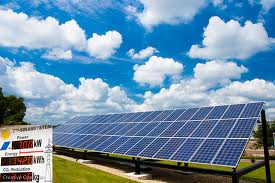Korean Solar sees Consolidation around 2 Players
June 24, 2013German Solar Panel Industry on its deathbed, despite the EU sanctions on Chinese Solar Panel Imports
June 25, 2013Solar Project delays in India leads to disappointment
India which is cited as one of the best markets in the world for solar energy is expected to disappoint the industry, as only 1 GW of 
Project delays in execution of large ground mounted solar farms is another reason as India is only supporting utility scale solar installations. Land acquisition, transmission and debt financing is a common bane for all power projects in India and solar energy is no exception. Despite a massive influx of super cheap solar panels from China, the demand is not really going up. The bad economy is another reason for this slow growth in demand. Though states like AP and TN have put out aggressive 1 GW solar reverse auction tenders, the success of these initiatives is not given. The low 11c/Kwh FIT fixed by the AP government has already driven away many investors, while TN too faces teething problems due to evacuation issues as well as lack of regulations.
Problems faced by Andhra Pradesh Solar Power Projects
AP had announced a huge 1 GW tender as it tried to beat the massive power crisis affecting the state. However, Indian governance remains a massive problem for Indian development and solar power is no different. AP is now mired in even worse problems.
The major problems being faced by Andhra Pradesh solar power projects are:
1) No clarity on how compensation will be given to solar energy providers. AP Transco is the nodal agency for managing the solar power policy. The government has not been clear on how the dispatching of the solar power will be done and how the money will be given. Note Indian discoms are notorious for being late in payments are most of them have accumulated billions of dollars in losses.
2) Low Feed in Tariffs – Many solar power developers are finding the 12c/Kwh to be too low, especially in areas with difficult terrain and low solar insolation. Many developers don’t think they will get a decent IRR at this tariff. Note Indian debt is also very expensive.
3) Problems in Raising Debt – This has been a recurring problem with Indian banks already having a big exposure to the electricity sector. Solar energy being a new sector, banks have been even more reluctant to lend.
Main Highlights of Tamil Nadu Solar Tender
The Indian state of Tamil Nadu had released a solar energy policy which aims to add solar energy capacity in the state by making it mandatory for industrial and other users to buy up to 6% of their energy requirements from solar energy by 2016. This solar power obligation (SPO) led to a huge interest by solar developers looking to sell solar power in the state. The Government has moved rapidly now to give a tender for 1000 MW of solar power capacity from bidders.
TN intends to add 1000 MW of solar energy capacity each in the next 3 years with the broad breakup amongst utility, rooftop and REC segments given below.
The 3000 MW of Solar Power will be achieved through Utility Scale Projects, Rooftops and under REC mechanism as follows:
| Utility Scale (MW) | Solar Roof Tops (MW) | REC (MW) | Total (MW) | |
| (a) | (b) | (c) | a + b +c | |
| 2013 | 750 | 100 | 150 | 1000 |
| 2014 | 550 | 125 | 325 | 1000 |
| 2015 | 125 | 125 | 675 | 1000 |
| Total | 1500 | 350 | 1150 | 3000 |
In utility scale out of 1500 MW, 1000 MW will be funded through SPO and balance 500 MW through Generation Based Incentive (GBI) provided by the Government.
Despite these temporary issues the secular growth factors remain in place and solar demand in India should grow once some of the governance issues are resolved. The Japanese and Chinese markets are living to their promise with both countries expected to occupy the top 2 slots in global demand this year.
